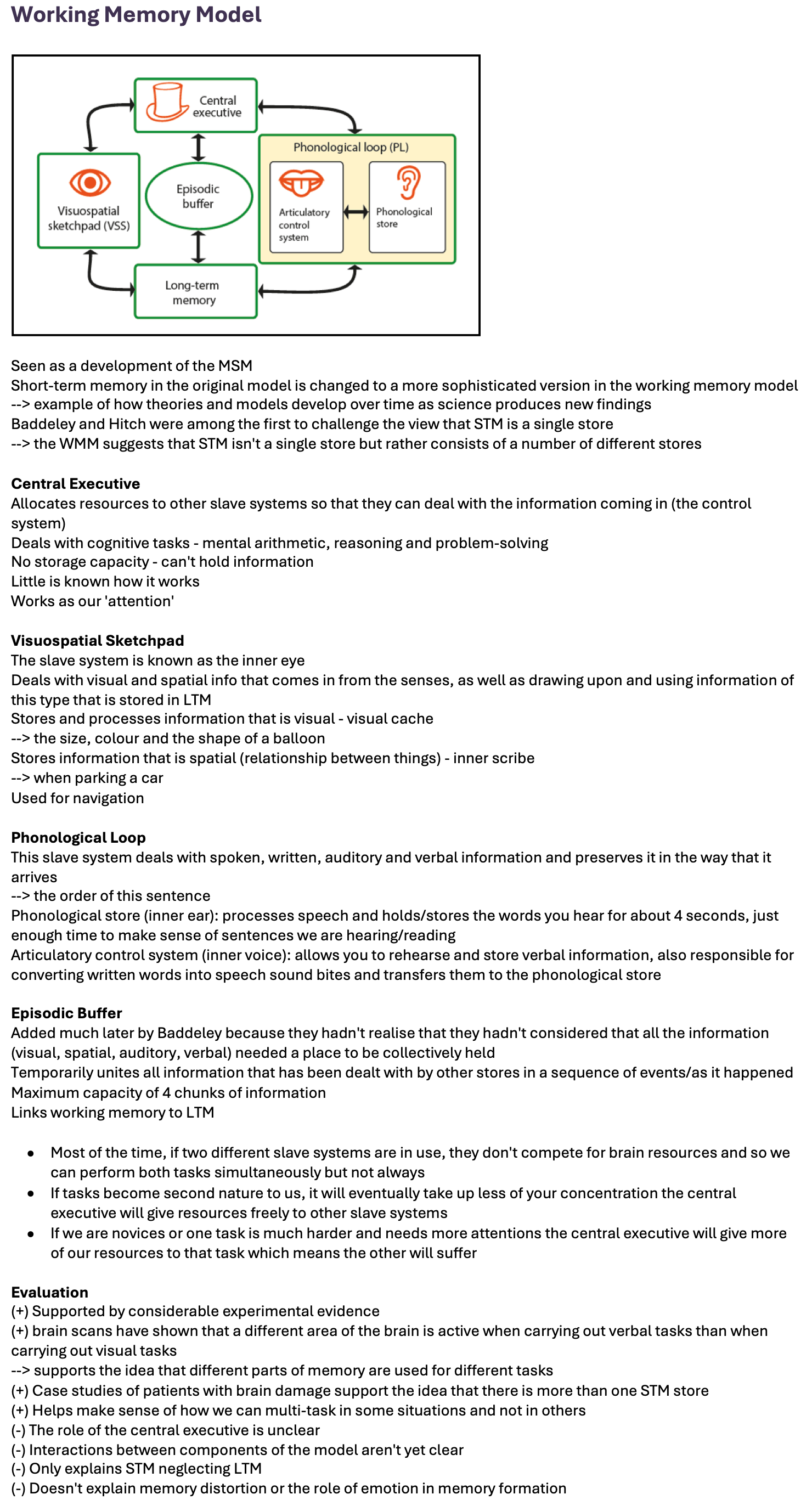Working Memory Model
Seen as a development of the MSM
Short-term memory in the original model is changed to a more sophisticated version in the working memory model
--> example of how theories and models develop over time as science produces new findings
Baddeley and Hitch were among the first to challenge the view that STM is a single store
--> the WMM suggests that STM isn't a single store but rather consists of a number of different stores
Central Executive
Allocates resources to other slave systems so that they can deal with the information coming in (the control system)
Deals with cognitive tasks - mental arithmetic, reasoning and problem-solving
No storage capacity - can't hold information
Little is known how it works
Works as our 'attention'
Visuospatial Sketchpad
The slave system is known as the inner eye
Deals with visual and spatial info that comes in from the senses, as well as drawing upon and using information of this type that is stored in LTM
Stores and processes information that is visual - visual cache
--> the size, colour and the shape of a balloon
Stores information that is spatial (relationship between things) - inner scribe
--> when parking a car
Used for navigation
Phonological Loop
This slave system deals with spoken, written, auditory and verbal information and preserves it in the way that it arrives
--> the order of this sentence
Phonological store (inner ear): processes speech and holds/stores the words you hear for about 4 seconds, just enough time to make sense of sentences we are hearing/reading
Articulatory control system (inner voice): allows you to rehearse and store verbal information, also responsible for converting written words into speech sound bites and transfers them to the phonological store
Episodic Buffer
Added much later by Baddeley because they hadn't realise that they hadn't considered that all the information (visual, spatial, auditory, verbal) needed a place to be collectively held
Temporarily unites all information that has been dealt with by other stores in a sequence of events/as it happened
Maximum capacity of 4 chunks of information
Links working memory to LTM
Most of the time, if two different slave systems are in use, they don't compete for brain resources and so we can perform both tasks simultaneously but not always
If tasks become second nature to us, it will eventually take up less of your concentration the central executive will give resources freely to other slave systems
If we are novices or one task is much harder and needs more attentions the central executive will give more of our resources to that task which means the other will suffer
Evaluation
(+) Supported by considerable experimental evidence
(+) brain scans have shown that a different area of the brain is active when carrying out verbal tasks than when carrying out visual tasks
--> supports the idea that different parts of memory are used for different tasks
(+) Case studies of patients with brain damage support the idea that there is more than one STM store
(+) Helps make sense of how we can multi-task in some situations and not in others
(-) The role of the central executive is unclear
(-) Interactions between components of the model aren't yet clear
(-) Only explains STM neglecting LTM
(-) Doesn't explain memory distortion or the role of emotion in memory formation
